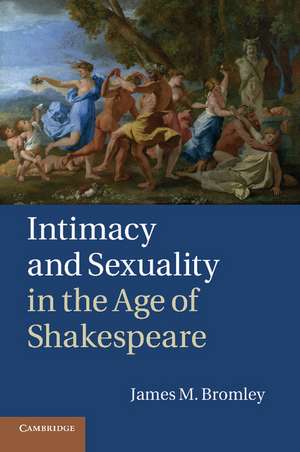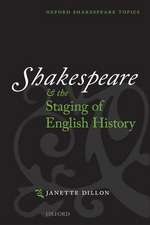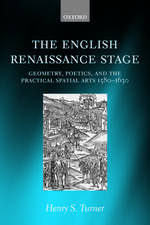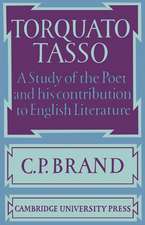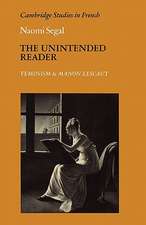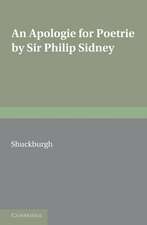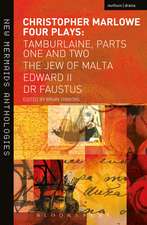Intimacy and Sexuality in the Age of Shakespeare
Autor James M. Bromleyen Limba Engleză Paperback – 18 sep 2013
| Toate formatele și edițiile | Preț | Express |
|---|---|---|
| Paperback (1) | 357.76 lei 6-8 săpt. | |
| Cambridge University Press – 18 sep 2013 | 357.76 lei 6-8 săpt. | |
| Hardback (1) | 692.50 lei 6-8 săpt. | |
| Cambridge University Press – 21 dec 2011 | 692.50 lei 6-8 săpt. |
Preț: 357.76 lei
Nou
Puncte Express: 537
Preț estimativ în valută:
68.46€ • 71.62$ • 56.87£
68.46€ • 71.62$ • 56.87£
Carte tipărită la comandă
Livrare economică 02-16 aprilie
Preluare comenzi: 021 569.72.76
Specificații
ISBN-13: 9781107693852
ISBN-10: 1107693853
Pagini: 220
Ilustrații: 2 b/w illus.
Dimensiuni: 152 x 229 x 13 mm
Greutate: 0.33 kg
Editura: Cambridge University Press
Colecția Cambridge University Press
Locul publicării:New York, United States
ISBN-10: 1107693853
Pagini: 220
Ilustrații: 2 b/w illus.
Dimensiuni: 152 x 229 x 13 mm
Greutate: 0.33 kg
Editura: Cambridge University Press
Colecția Cambridge University Press
Locul publicării:New York, United States
Cuprins
Introduction: interiority, futurity, and affective relations in Renaissance literature; 1. Intimacy and narrative closure in Christopher Marlowe's Hero and Leander; 2. A funny thing happened on the way to the altar: the anus, marriage, and narrative in Shakespeare; 3. Social status and the intimacy of masochistic sexual practice in Beaumont and Fletcher and Middleton; 4. Nuns and nationhood: intimacy in convents in Renaissance drama; 5. Female homoeroticism, race, and public forms of intimacy in the works of Lady Mary Wroth; Epilogue: invitation to a queer life.
Recenzii
'One relishes the way in which Bromley pursues his arguments … via texts other than the usual suspects. And when Bromley does now and again take up some of the more expected literary cases for a study of early modern intimacy (and its discontents), he succeeds in making those works look different. This book is well informed regarding the most pertinent critical debates of the moment in sexuality studies.' Richard Rambuss, Brown University, Rhode Island
'Bromley's book on what he terms 'failures of intimacy' does indeed represent a compelling new direction for queer Renaissance studies … [He] succeeds in striking a balance between historically informed and playfully irreverent readings of Renaissance texts … Intimacy and Sexuality in the Age of Shakespeare represents an important and timely intervention in queer early modern studies.' David L. Orvis, Literature and History
'In Bromley's hands, this way of reading texts is revealing and exciting … [making] highly canonical texts look genuinely new and exciting … One of the chief virtues and pleasures of Bromley's study is his inventiveness in finding and describing sexual practices that have not been previously noticed or foregrounded by other readers and critics. Setting aside the argument about how such bodily practices relate to the supposed modern ideal of companionate intimacy, we can see the many brilliant readings Bromley offers as data that plot what literary texts can imagine bodies doing with one another in a purely grammatical way … In essence, Bromley describes a particularly inventive and beautiful historical moment where the scaffolding of ancient classical culture (also explored influentially by Bruce R. Smith) and the emergence of new modes of writing and media combine to open the door to a subtle and sophisticated program of representing a surprisingly broad spectrum of sexual acts.' Shakespeare Quarterly
'Sharp and incisive, creative as it is contextualised, Intimacy and Sexuality in the Age of Shakespeare adds much to current debate about the social meanings of marriage, reminding us of what we might be losing, even as we gain expanded protections for some of our sexual intimacies.' Holly Dugan, Modern Philology
'Bromley's book on what he terms 'failures of intimacy' does indeed represent a compelling new direction for queer Renaissance studies … [He] succeeds in striking a balance between historically informed and playfully irreverent readings of Renaissance texts … Intimacy and Sexuality in the Age of Shakespeare represents an important and timely intervention in queer early modern studies.' David L. Orvis, Literature and History
'In Bromley's hands, this way of reading texts is revealing and exciting … [making] highly canonical texts look genuinely new and exciting … One of the chief virtues and pleasures of Bromley's study is his inventiveness in finding and describing sexual practices that have not been previously noticed or foregrounded by other readers and critics. Setting aside the argument about how such bodily practices relate to the supposed modern ideal of companionate intimacy, we can see the many brilliant readings Bromley offers as data that plot what literary texts can imagine bodies doing with one another in a purely grammatical way … In essence, Bromley describes a particularly inventive and beautiful historical moment where the scaffolding of ancient classical culture (also explored influentially by Bruce R. Smith) and the emergence of new modes of writing and media combine to open the door to a subtle and sophisticated program of representing a surprisingly broad spectrum of sexual acts.' Shakespeare Quarterly
'Sharp and incisive, creative as it is contextualised, Intimacy and Sexuality in the Age of Shakespeare adds much to current debate about the social meanings of marriage, reminding us of what we might be losing, even as we gain expanded protections for some of our sexual intimacies.' Holly Dugan, Modern Philology
Notă biografică
Descriere
Bromley investigates Renaissance drama, poetry and prose through the lens of 'non-standard' and experimental forms of affection.
